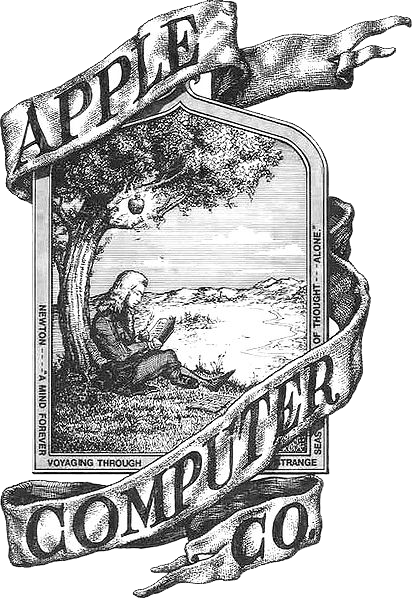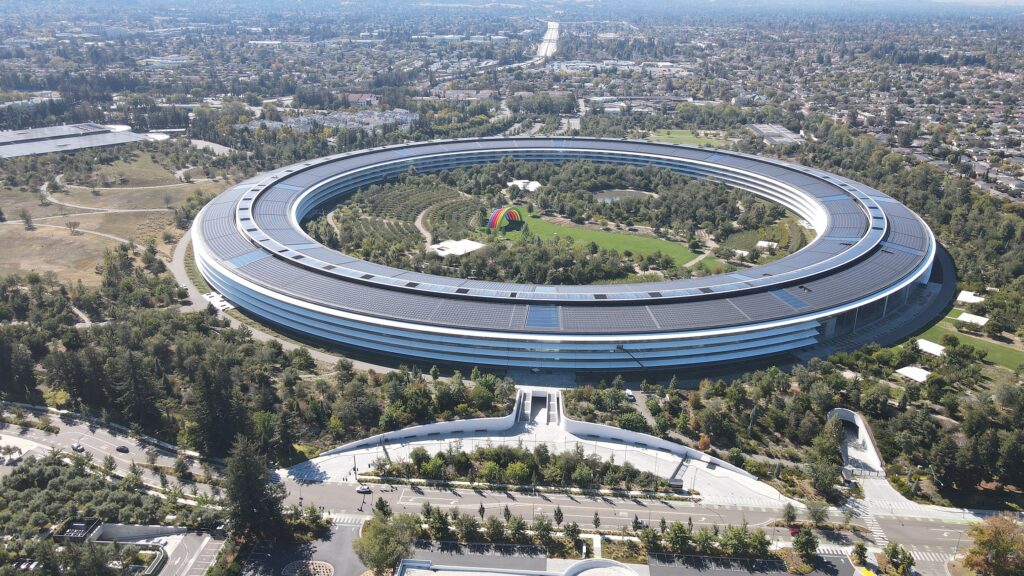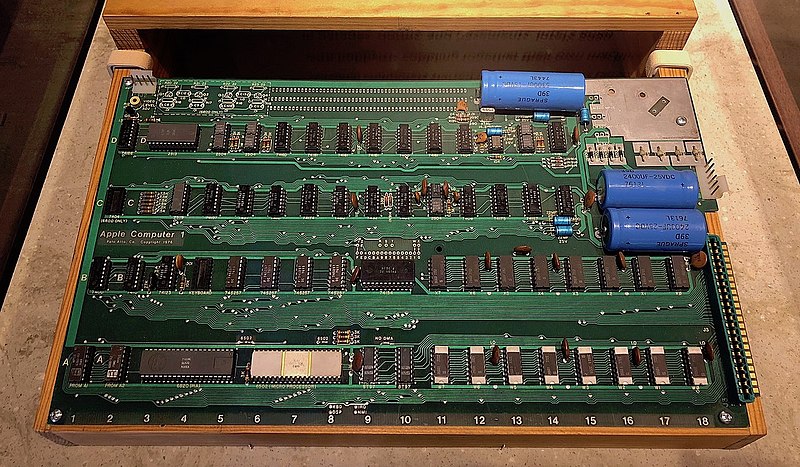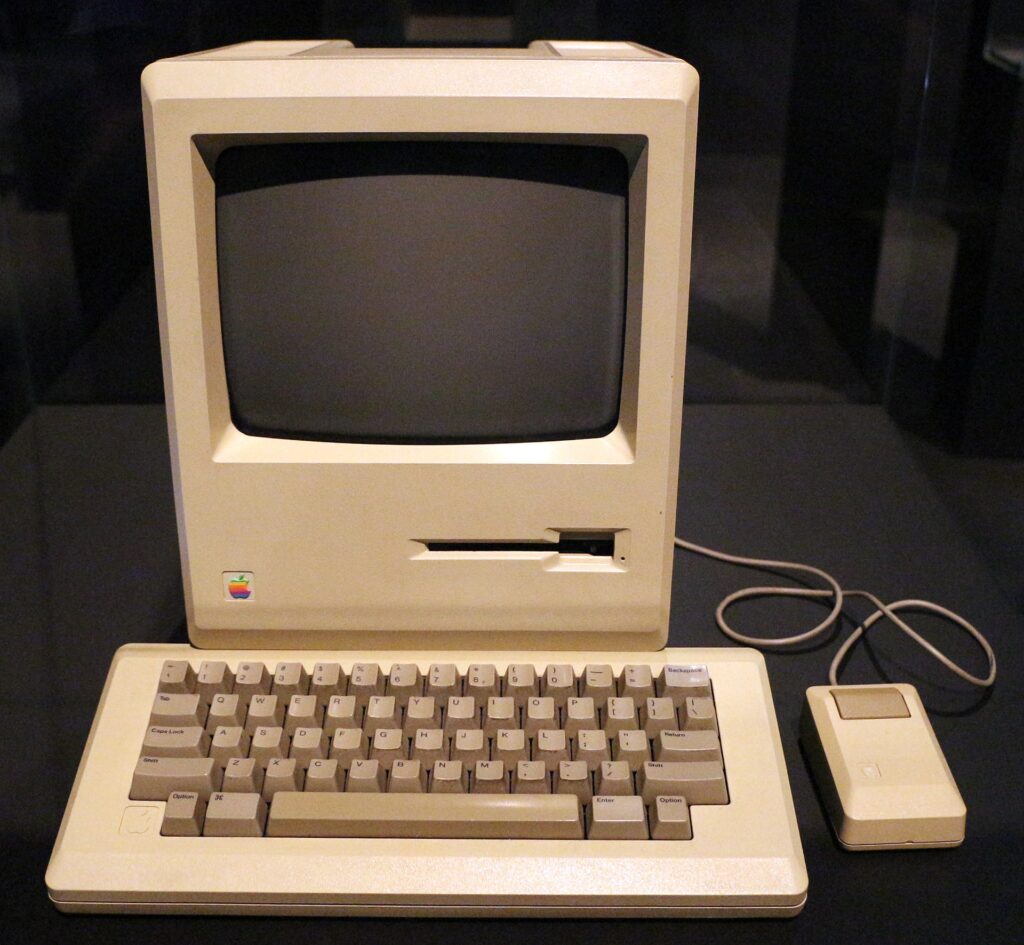✅ What we’ll cover
After completing this lesson, you’ll be able to:
- Relate the history of Apple and its products
- Outline Apple’s contributions to new media
- Describe Apple’s vision for personal computing
What are case studies in this course?
If you’re a business school person, this’ll be different than the type of focused case study you’re used to. Instead, it’s just what we’re calling lessons that focus more on a specific company (or type of company) rather than a broader new media topic.
We’ll start with Apple for several reasons: it’s be our first lesson in the new section alphabetically; it’s the oldest new media company we’ll be looking at; it’s perhaps done more than any other company to move computing into mainstream culture; and, not insignificantly, it’s my own personal favorite company.
In any case, let’s begin.
Apple’s History
📚 Apple Turns 40: Reflecting on Four Decades of History, Joe Rossignol
(1,874 words / 10-15 minutes)
The above article, from 2016, does an excellent job providing a quick overview of Apple’s rich history. In addition to being a solid read on its own, it also provides a good, concise outline for the longer second reading you’ll do next.
Also, watch the “40 Years in 40 Seconds” ad (update: the video on the site was removed, but you can watch it here) before you read the rest of the article. Then, watch it again after you’ve completed everything in the lesson, and see how much you understand that you didn’t pick up on in your first viewing.
(Also, here’s an annotated list of everything in the ad—not strictly required, but extremely helpful!)
📚 History of Apple Inc., Wikipedia
(8,263 words / 42-50 minutes)
This article functions as a second, higher-definition version of the first one. You’re encouraged to go down any rabbit holes in it that catch your interest
How long has Apple been around?
Apple was founded on April 1, 1976, meaning they’ve been around for over forty-five years!
It’s pretty great that Apple was started on April Fool’s day. Although Apple’s an enormous 1 corporation now, it really had a strong rebel spirit as a part of its early DNA.
That said, it’s probably a good thing that they replaced their original logo, which featured Isaac Newton:
Was Apple really founded in a garage?
Yes, 100%! As a matter of fact, Apple is kind of the canonical example of a start-up created in Steve Jobs’s parents’ garage:
Who founded Apple?
Steve Jobs, Steve Wozniak, and Ronald Wayne.
Just about everyone knows who Steve Jobs was, and we’ll talk about him plenty throughout the rest of this lesson.
Steve Wozniak, or Woz, though not as famous as Jobs, was the technical genius behind much of Apple’s early hardware and software. Though we won’t study terribly much more about Woz, he’s such an interesting foil to Steve Jobs—it’d be well worth your while to read more about him, maybe even to watch some video of him.
(And Ronald Wayne? He sold his initial 10% share of the company back to the two Steves within two weeks of Apple’s incorporation for $800—oof.)
What were the first computers Apple made?
The Apple I was actually an assembled circuit board sold for $666.66 that sold in relatively small numbers:
The Apple II was Apple’s first huge success and true complete computer. Its success established Apple’s early reputation, and carried the company financially for many years.
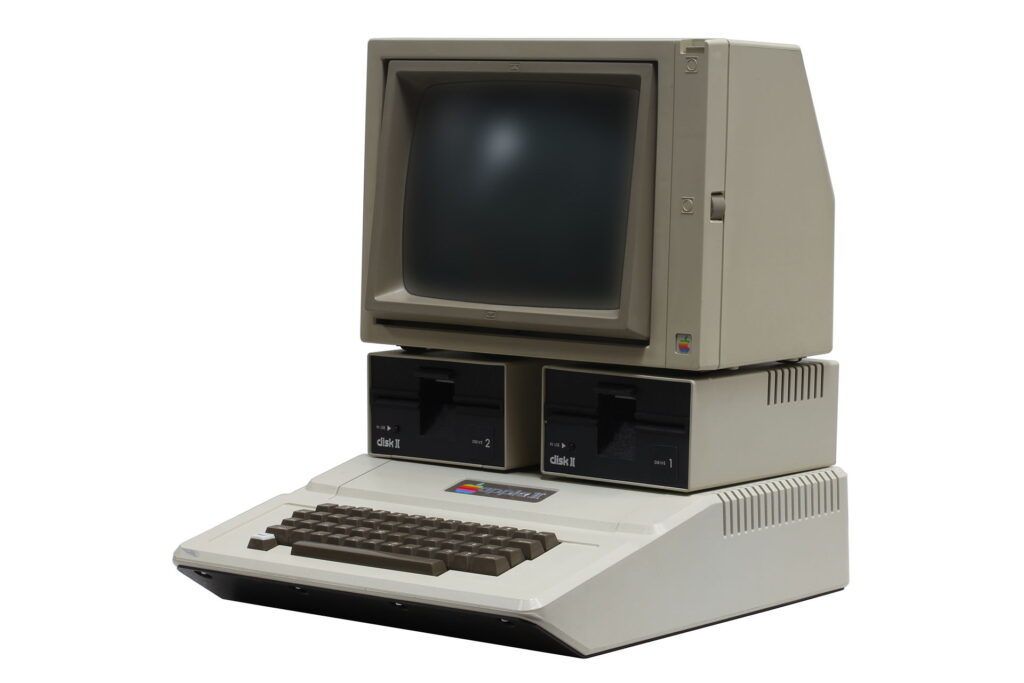
(For everyone’s sake, we won’t say too much about the Apple III, except to note that Apple’s obsession with fanless machines started in 1980 with the Apple III. Its vision finally came true with the new MacBook released in 2015. That’s persistence.)
Finally, the Lisa was the precursor to the Mac that foreshadowed many of the Mac’s features but was priced impractically high.
What happened in 1984?
In 1984, Apple released the first Macintosh.
Borrowing heavily from work at Xerox PARC, the Mac was the first mainstream computer based around a GUI, or graphical user interface.
The Mac was introduced via Apple’s famous “1984” ad, which was a first-of-its-kind big-budget Super Bowl ad.3
Did, uh, anything happen at Apple between the original Mac and the iMac?
Apple’s 40-year recap video sure doesn’t make it seem like it, does it?
In 1983, Apple brought in John Sculley, formerly the president of Pepsi, as CEO. Steve Jobs famously convinced Sculley to come to Apple, asking him, “Do you want to sell sugar water for the rest of your life or come with me and change the world?”
Sculley and Jobs frequently butted heads, and in 1985, after numerous corporate power struggles, Steve Jobs left the company he co-founded. Of course, plenty happened at Apple between 1984 and 1998. Apple introduced the Laserwriter, iterated on the Mac, and introduced the ahead-of-its-time Newton.
What did Steve Jobs do after he left Apple?
During his time away from Apple, Jobs founded a new company, NeXT Computer. Though not a commercial success on its own, NeXT is historically significant for two reasons. First, Sir Tim Berners-Lee created the Web on a NeXT computer. Second, Apple’s acquisition of NeXT in 1997 not only brought Jobs back to the company he founded, but the operating system NeXT had created became the foundation for macOS, which eventually became iOS, which begat watchOS and tvOS.
Jobs also acquired Lucasfilm’s computer graphics division, which eventually became Pixar, during this period. Though Jobs already had plenty of money from Apple’s IPO, it was Pixar’s IPO that made him a billionaire.
When and how did Steve Jobs come back?
Though Apple grew in size in the mid-to-late 1980s in Jobs’s absence, by the mid 1990s, it was struggling, both financially and from a product perspective.
The Mac had been thoroughly outcompeted by Windows PCs, and the Macintosh operating system was woefully outdated from a technical perspective. After numerous failed attempts to modernize Mac OS internally, Apple began seeking external companies it could acquire to form the technical foundation of Mac OS going forward.
Eventually, Apple acquired Job’s NeXT for around $400 million in 1997. Initially, Jobs was uncertain whether he would permanently return to Apple after the acquisition, but he eventually decided to stay on board as CEO, beginning one of the most successful turnaround stories in business history.
What was the significance of the original iMac?
Released in 1998, the iMac represented a vivid break from the dull Windows PC towers of the time.
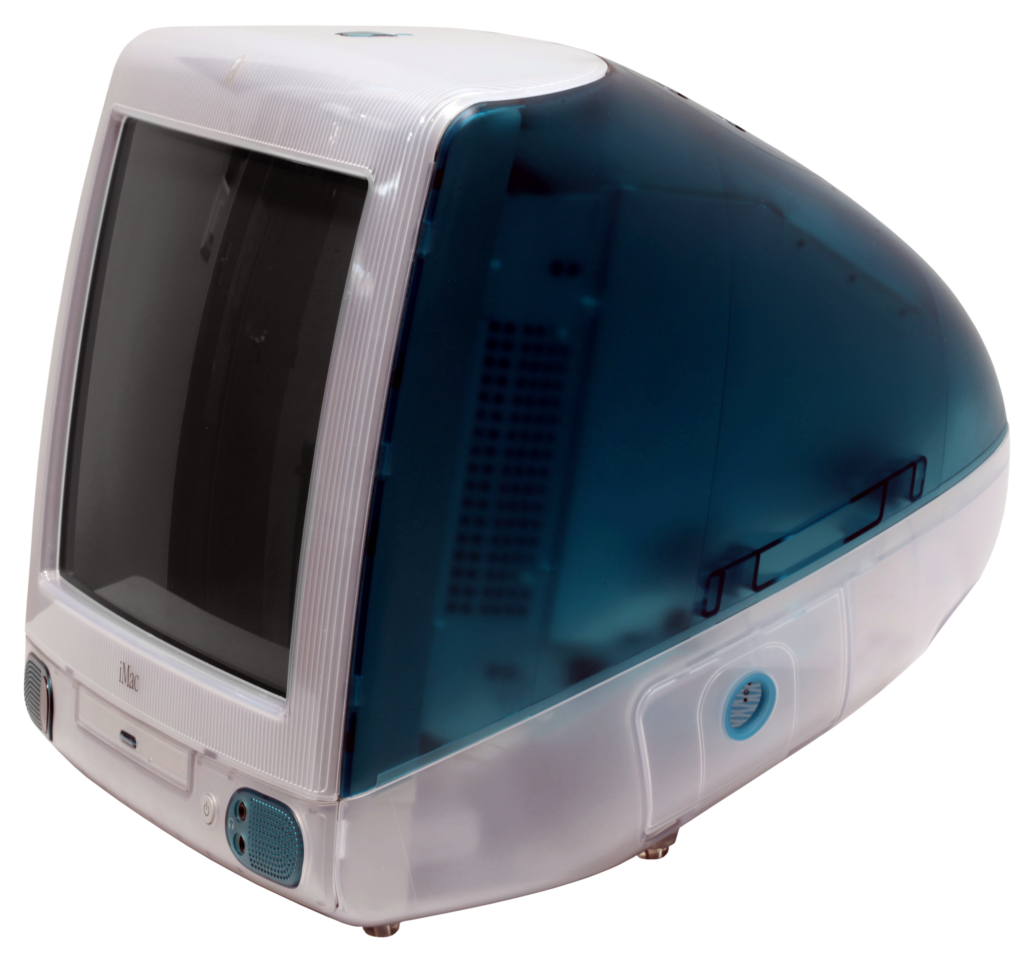
The iMac was designed by (the future Sir) Jony Ive, who would go on to become Apple’s Chief Design Officer and designer of not only the iMac but also the iPod, iPhone, iPad, and Apple Watch. Ive was Steve Jobs’s closest collaborator during his second stint at Apple.
Why was the iPod such a big deal?
Introduced in 2001, the iPod broadened Apple’s appeal beyond just computers. Though now it seems like a quaint relic of the past that’s since been reduced to a mere app, it’s hard to overstate either the cultural significance of the iPod or its impact on Apple’s finances.
What happened in 2007?
History may regard the introduction of the iPhone on January 9, 2007 (and / or its release on June 29, 2007) as a really big deal. Computers had obviously been around for a good while before the iPhone, but as we’ll discuss in much greater detail in our smartphones lesson, the smartphone really has become the first universal, global computing platform.
The iPhone is, non-hyperbolically speaking, the most successful single product in human history, at least from a financial perspective. Not even Apple knew what a hit it had on its hands when it introduced it.
Also, if you’ve never seen the introduction of the iPhone, it’s worth a look.
Is the iPad just a big iPhone?
I mean, kind of, at least initially, but historically speaking, it’s more accurate to say the iPhone is just a small iPad. Apple’s interest in tablets goes back at least to the Newton, and work on touchscreen tablet computers was underway before development of the iPhone.
In many ways, the iPad, released in 2010, is the purest expression of Apple’s computing philosophy—simple, integrated, inevitable in its design.
When did Steve Jobs pass away?
Steve Jobs passed away from pancreatic cancer on October 5, 2011 at the age of 56.
Who is Tim Cook, and how has he led Apple?
Tim Cook was appointed CEO of Apple in August of 2011, before Jobs’s passing. Coming from an operations background (not product or design, like Jobs), Cook initially faced great skepticism as he began his tenure at Apple.
However, under Cook’s leadership, Apple grew into the world’s largest corporation.
Why was the Apple Watch so significant to Tim Cook-era Apple?
Though Tim Cook was seen as a highly capable operator, many doubted that Apple under Cook’s leadership could successfully develop new breakthrough products.
Development on the Watch began after Jobs’s death, and, despite a few initial stumbles, has grown into a highly successful business for Apple.
Under Cook’s leadership, Apple also successfully launched AirPods, many smaller products, and numerous services.
What’s next for Apple, product-wise?
As of late 2022, many see an AR (augmented reality) headset as Apple’s next major product category.
What are Apple’s tendencies?
Niceness
As John Gruber has noted, “The defining characteristic of [an Apple product] is that it’s nice.” Gruber notes Apple’s attention to small details—quiet (or even silent) and cool operation, quick wake-from-sleep times, etc.—are, just as much as fast benchmark-able performance, what makes a good—and they aren’t all good—Apple product a good Apple product.
Apple’s priorities
Apple’s institutional priorities are, in order:
- Apple
- Apple customers
- Apple developers
As we study other new media companies, it might prove a fruitful exercise to consider their priorities.
Secrecy and rumors
Since its early days, Apple has had a corporate culture of secrecy. At today’s scale, Apple hardware often leaks early, but Apple remains excellent at keeping specific software secrets up until product launches.
Innovative sales strategies
Since its early days, Apple has been highly effective and innovative at selling to consumers. Two more recent sales innovations include:
- Apple’s retail stores. It’s really hard to understand just how big of a mistake people in 2001 thought the Apple Stores would be, especially now that they’re the most profitable retail chain per square foot.
- The iTunes Music Store. The iTMS brought about numerous innovations of its own, and even went on to paved the way for today’s multi-billion-dollar app stores.
What are Apple’s contributions to industry?
Focus on design
More than any other company, Apple is responsible for bringing a focus on design to consumer computing devices. To quote Steve Jobs, “[Design is] not just what [something] looks like and feels like, [it’s] how it works.”
User experience
Even more specifically, the field of user experience design arguably has its origins at Apple.
Making the “whole widget”
Much of Apple’s strength comes from the fact that, as Steve Jobs used to say, they make “the whole widget”—custom-built and custom-integrated hardware and software (and now, increasingly, services, too).
This philosophy has been extended in what’s sometimes called the Cook doctrine, which argues that “[Apple believes] that we need to own and control the primary technologies behind the products we make.”
The most prominent recent example of this principles is Apple’s extraordinary efforts with its custom Apple silicon.
Iteration
Though Apple is justifiably famous for its breakthrough products, just as core to Apple’s success is relentless iteration.
This Verge article covering the first fifteen years of iPhone models shows how Apple rolls when it comes to iterative improvements.
Why do some people not like Apple?
For many reasons, some of them quite legitimate! There’s even an entire Wikipedia article on criticism of Apple, which helpfully provides the following list of “[varied] allegations against the company”:
- Thwarting smaller competitors
- Software Restrictions on iOS, iPadOS, watchOS, and tvOS
- Dishonest corporate policy
- E-waste and environmental destruction
- Financial affairs
- Harsh labor conditions and child labor accusations
- Collaboration with governments’ surveillance and censorship efforts
- Planned obsolescence
Non-required readings
📚 Becoming Steve Jobs, Brent Schlender and Rick Tetzeli
A fantastic biography of Steve Jobs, far better than Walter Isaacson’s official bio. Heartily recommended.
📚 Daring Fireball, John Gruber
This is far and away my favorite blog. Read the few most recent articles to get a feel for what it’s like, or listen to the associated podcast, The Talk Show. 4
˜If you really want to get deep into Apple, start at the bottom of the archive and just start reading articles that catch your fancy.
Discussion Questions
- A lot of people either passionately love or passionately hate Apple products. If you fall into either camp, that’s okay—let’s take a minute here first to talk about why you love / hate Apple and / or its products.
- Share what you learned about Apple from the lessons that surprised you, especially anything about its history.
- Share something about Apple specifically not mentioned in either of the readings.
- How would you articulate Apple’s vision for personal computing?
Words on / reading time for this page: 1,121 words / 6-8 minutes
Words in / reading time for required readings: 10,137 words / 52-65 minutes
Total words in / reading time for this lesson: 11,258 words / 58-73 minutes
On good days on the stock market, the most enormous ↩
Where I filmed the video at the top of this lesson—Apple Park wasn’t yet open when I visited.↩
Also, the director of that ad!↩
I’m such a huge nerd that I went to the live taping of the show in San Francisco during WWDC 2016 this summer—and freaking loved it.↩
